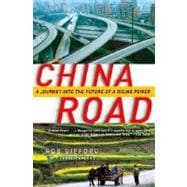
Note: Supplemental materials are not guaranteed with Rental or Used book purchases.
Purchase Benefits
What is included with this book?
| Introduction: The Mother Road | p. xiii |
| The Promised Land | p. 3 |
| Dislocation | p. 14 |
| Things Flow | p. 28 |
| The Unfinished Revolution | p. 41 |
| "A Single Spark Can Light a Prairie Fire" | p. 51 |
| Silicon Valley | p. 64 |
| "Women Hold Up Half the Sky" | p. 76 |
| "Put the People First" | p. 86 |
| Power | p. 97 |
| The Hermit of Hua Shan | p. 112 |
| Elvis Lives | p. 125 |
| The Last Great Empire | p. 140 |
| Monks and Nomads | p. 153 |
| No Longer Relying on Heaven | p. 165 |
| "We Want to Live!" | p. 177 |
| Respect | p. 194 |
| The End of the Wall | p. 205 |
| The Caves of a Thousand Buddhas | p. 215 |
| Endurance | p. 227 |
| The Great Wall of the Mind | p. 236 |
| "China Is a Colonial Power" | p. 248 |
| From Sea to Shining Sea | p. 259 |
| A Road Is Made | p. 273 |
| Acknowledgments | p. 297 |
| Select Bibliography | p. 301 |
| Index | p. 305 |
| Table of Contents provided by Ingram. All Rights Reserved. |
The New copy of this book will include any supplemental materials advertised. Please check the title of the book to determine if it should include any access cards, study guides, lab manuals, CDs, etc.
The Used, Rental and eBook copies of this book are not guaranteed to include any supplemental materials. Typically, only the book itself is included. This is true even if the title states it includes any access cards, study guides, lab manuals, CDs, etc.
Excerpted from China Road: A Journey into the Future of a Rising Power by Rob Gifford
All rights reserved by the original copyright owners. Excerpts are provided for display purposes only and may not be reproduced, reprinted or distributed without the written permission of the publisher.